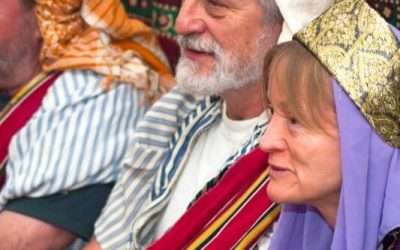This is the second part of a two-part series looking at the diversity, depth, and divine promise of the Great Commission. In part one, several Great Commission passages were listed in chronological order. It was observed that it was given in an incremental and repetitive manner to impart the importance and each instance highlighted a specific emphasis and mandate.
Now, in part two, the article is going to synthesize the passages to have a more robust view of the task and some practical next steps to be better equipped to fulfill the mandates of the Great Commission.
You can read part one here.
But as a recap from part one, check out this image.
On a practical level, how does this help us?
The individual emphasizes provide clarity in seeking to pursue fulfilling the Great Commission
- The Model (John 20:21) – We are to look to the Lord Jesus for our model of ministry. Jesus has a pattern laid out in the New Testament for engaging in the task given by the Father.
- The Magnitude (Mark 16:15) – Jesus continues the narrative of the Old Testament that the knowledge of God’s glory is to cover the earth as the water covers the sea. He clearly indicates that it is to go into all the world and into all creation. Stopping short of that goal is settling for less than a biblical vision of the Great Commission.
- The Method (Matthew 28:18-20) – Jesus had spent his 3-year ministry investing in a few. Not only does Jesus tell us that He is our model, but he is emphasizing the method of making disciples, baptizing, and teaching obedience… to all nations.
- The message (Luke 24:46-48) – Jesus wanted to ensure that the message His disciples were carrying was clear and concise. We are to carry a message of repentance and forgiveness of sins in the name of Jesus… to all nations
- The Means (Acts 1:8) – We can not do this in our own power. Any attempt to fulfill the Great Commission without the power of God through His Spirit is more about the individual and his/her pride and self-glorification than the glory of God to all nations. Walking out the Great Commission is really about walking boldly in the Spirit carrying the message of the gospel to the whole world, and making disciples as Jesus modeled.
This should help you see the diversity and depth of the Great Commission, but what about the divine promise?
Jesus in his Olivet Discourse gives the reader a glimpse into the end of times. In Matthew 24:14, we see not a commission, but a divine promise.
Matthew 24:14 (ESV)
14 And this gospel of the kingdom will be proclaimed throughout the whole world as a testimony to all nations, and then the end will come.
John writing about the heavenly vision sees the fulfillment of this divine promise.
Revelation 7:9-12 (ESV)
9 After this I looked, and behold, a great multitude that no one could number, from every nation, from all tribes and peoples and languages, standing before the throne and before the Lamb, clothed in white robes, with palm branches in their hands,
10 and crying out with a loud voice, “Salvation belongs to our God who sits on the throne, and to the Lamb!”
11 And all the angels were standing around the throne and around the elders and the four living creatures, and they fell on their faces before the throne and worshiped God,
12 saying, “Amen! Blessing and glory and wisdom and thanksgiving and honor and power and might be to our God forever and ever! Amen.”
So what now? Let’s come back to the 5 ‘M”s
- Model – Do you know Jesus’ model of ministry? A helpful tool that many have recognized in the gospels (and the Book of Acts) is the 4 fields of Kingdom Growth. Learn more about it here.
- Magnitude – Do you have a vision for all peoples and all nations? Here are some resources that will grow your vision and understanding of unreached people groups and the status of the world.
- Method – Do you have a method that is simple, reproducible, and teaches people to obey all the commands of Christ?
- Message – Do your church members (all of them) have a simple, reproducible, clear, and concise gospel presentation? If not, check out this gospel tool.
- Means – You can grasp all of the other parts, but if you miss the Power of the Spirit you’ve missed the point. God throughout history has been in the business of making His name known. Now we live in the age of the Spirit. Let us walk in the power of the Spirit. If you’re looking for practical teaching to help you understand how that looks. Check out this book.
Would you take the next step? Start with viewing your ministry through these five categories and evaluate the work according to what Jesus has called his disciples to be about. If you find that you would like to grow in an area, seek God and others to help you walk along this journey with Jesus.




